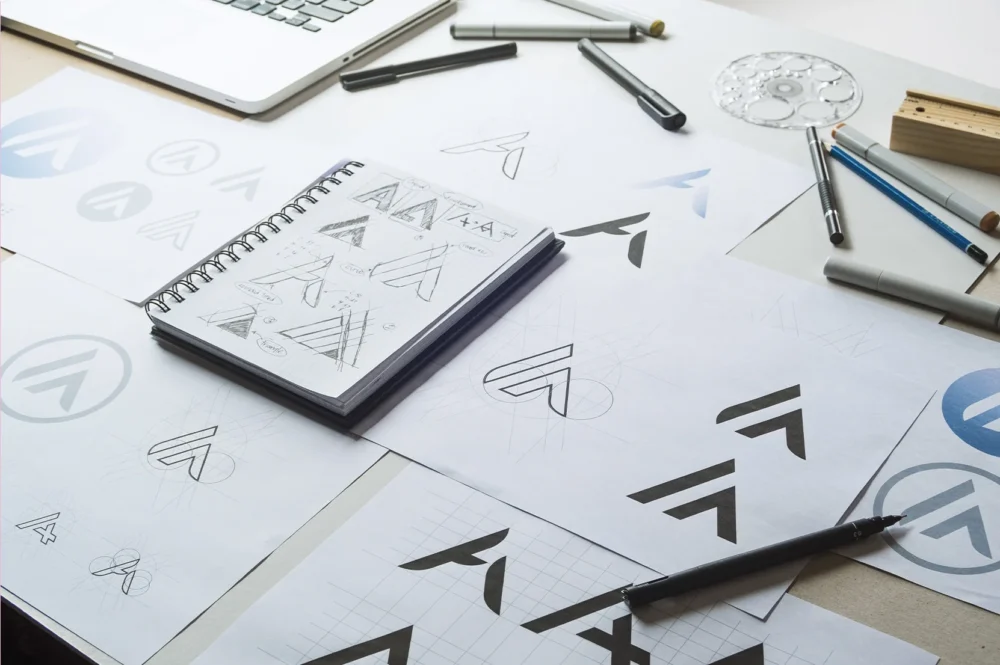This situation is familiar to every designer from any corner of the world: when a client gives an example of a logo that he likes, he always mentions Apple and Nike. But does it make sense? Let’s figure out why we like some logos and are indifferent to others, and whether they really have that much weight. Let’s consider this situation more comprehensively. To begin with, you need to understand how visual (and other) communication works in general.
It will be correct to start with the first “logotype” contact with the product – with the name. Let’s assume a hypothetical situation in which the Apple company is called Pear. The high-tech company is not called an “apple”, but a “pear”. How many people will give up their gadgets because they have a pear on them? Yes, of course you can mention the symbolism of the apple itself, Newton and the forbidden fruit. And from the height of our experience, we can say that this contains a deep and interesting philosophy. So it is. But it will not change the essence — Apple, Nike and others are cool precisely because of our experience and the legend created around the brand. A legend that we know and that matches our values.
Many successful brands have a simple text logo. Great examples of these can be found on the “LogoLook.net”.

Source: unslplash.com
If we imagine that we have no experience of interaction with the brand and we hear Adidas, H&M, Balenciaga for the first time, are these good names or bad? What do they mean to us personally? Is it just a successful combination of letters and sounds? What would an inhabitant of the jungles of Papua New Guinea, who had never been in contact with Western culture, say about them? And when it comes to launching a brand, a product, in fact, everyone is this Papuan who does not know anything about a new brand. Then other forces come into play.
A whole network of images is built around each name: the rhythm of reading, which voice pronounces it, with what intonation, pace, what timbre? What it means for the dominant culture at that time and in that place, or a certain stratum of people, or a specific personality – it is these associations that will work for the person who perceives it. Because the context decides our attitude to things.
Let’s recall the famous Volkswagen pecshot. What is this voice talking about? About the fact that Volkswagen is a car? Of course not. About the status, mood of the brand. and only those who have read Wikipedia know that the name translates as “people’s car”. When I listen to this pecshot, closing my eyes, I feel the weight of an expensive watch, a perfectly fitted suit, and the smoky smell of perfume… Opening my eyes, I notice that I’m looking at a model line. The name alone will not do that. She needs associations and stories, because you and I are ready to buy an interesting story or atmosphere — that’s what quality branding is.

Source: farmhousecreative.net
Therefore, the first task when working on branding is to create an interesting legend, surrounded by a halo of values and ideas that will enter the hearts of people.
There is a certain experience of interaction with the brand: we went to the showroom, received a consultation, or purchased a certain product after testing the service. Triggers begin to come on that remind us of this experience and the product or service that made us feel good. One such trigger is the logo. We see him, and in our brain emerges all that whirlwind of emotions and experiences associated with the previous experience. In the case of a positive previous experience, the logo is liked more and more, and if the consultant was rude, then the logo will also cause an immediate reaction.
That is, the logo is the trigger. The red button, which causes us certain associations and necessary feelings, which in turn is already a charge that hits the target. I observe that often some brand managers confuse the charge with the trigger mechanism, mistakenly believing that the logo will do all the work itself.
Personal associations and stereotypes also work in the case of naming. Not so long ago, he witnessed a beautiful scene at the airport: two women, a mother and a grandmother, were approached by a teenage girl, returning from duty free. She gives them her wrist with the fragrance that she really liked. Women, bringing their noses to the girl’s hand, smell the aroma and nod in approval. Mom says: “Wonderful fragrance, suits you! We can’t buy now, but if you write the name and brand, my father and I will bring it to you next time.” And then the grandmother asks what his name is. — “Opium”. Women change their faces, because this is definitely something not good and definitely not for a girl. Rather, it is not a fact for mature ladies.

Source: creativecoconuts.ca
Does this situation make the name bad because perfume will not be bought because of it? No, it doesn’t. It is likely that the brand was counting on a different audience devoid of such stereotypes. The kind that can fall in love first with the name and the legend that pops up in the imagination, and then with the aroma. And the appearance and logo will serve as a red button that activates receptors. This is the process of customer selection.
We don’t like the logo by itself, just like we don’t like gold by itself. We like the things made from it, or the possibilities that can open up to us if we own a lot of gold ore.
For a designer, the whole difficulty lies precisely in making the associations of different people with different experiences as close as possible. Of course, in this context, working on a logo is difficult and painstaking. In case of low-quality execution, it can cause negative associations, or those that do not correspond to the level of service, do not coincide with the desired image or associations. But for the most part, the logo will work like a Rorschach test and everyone will see something different in it.




